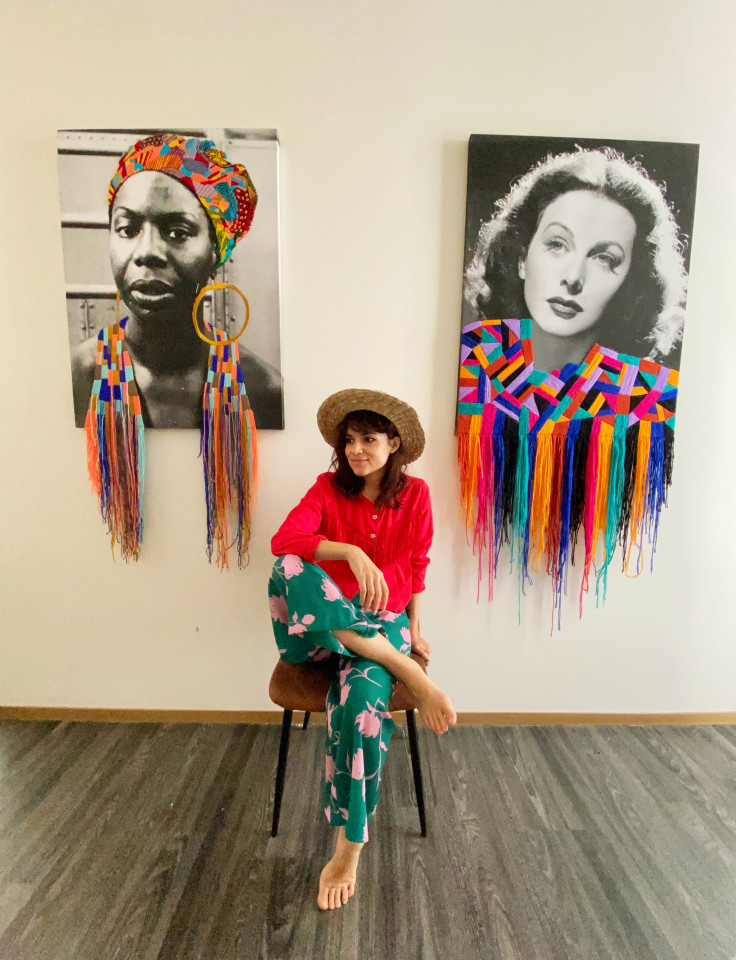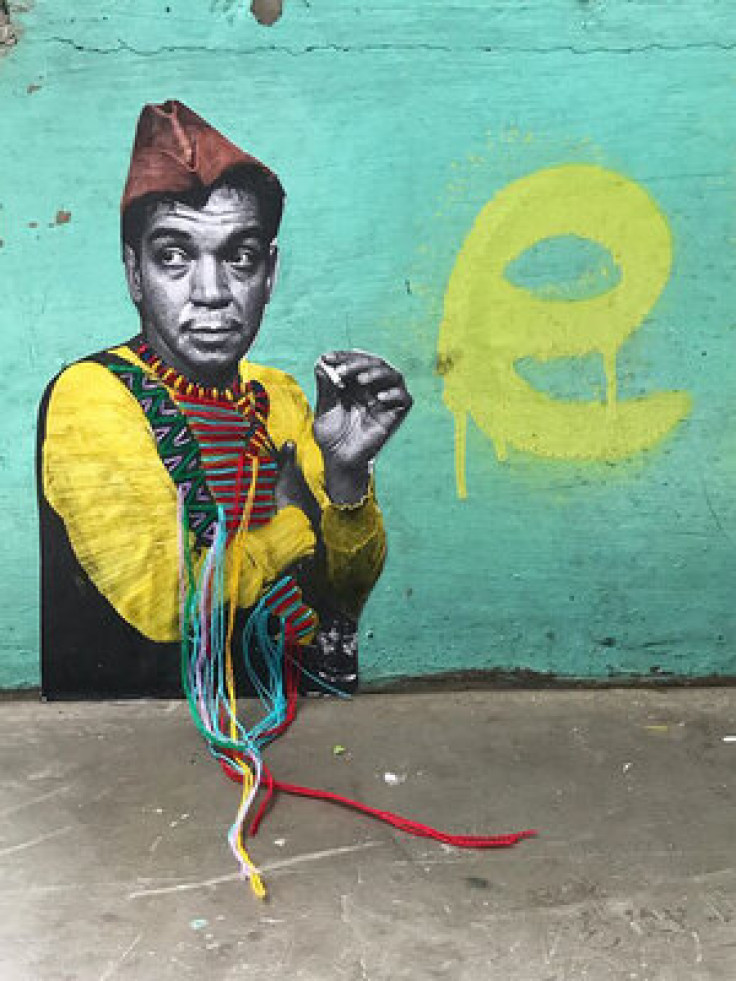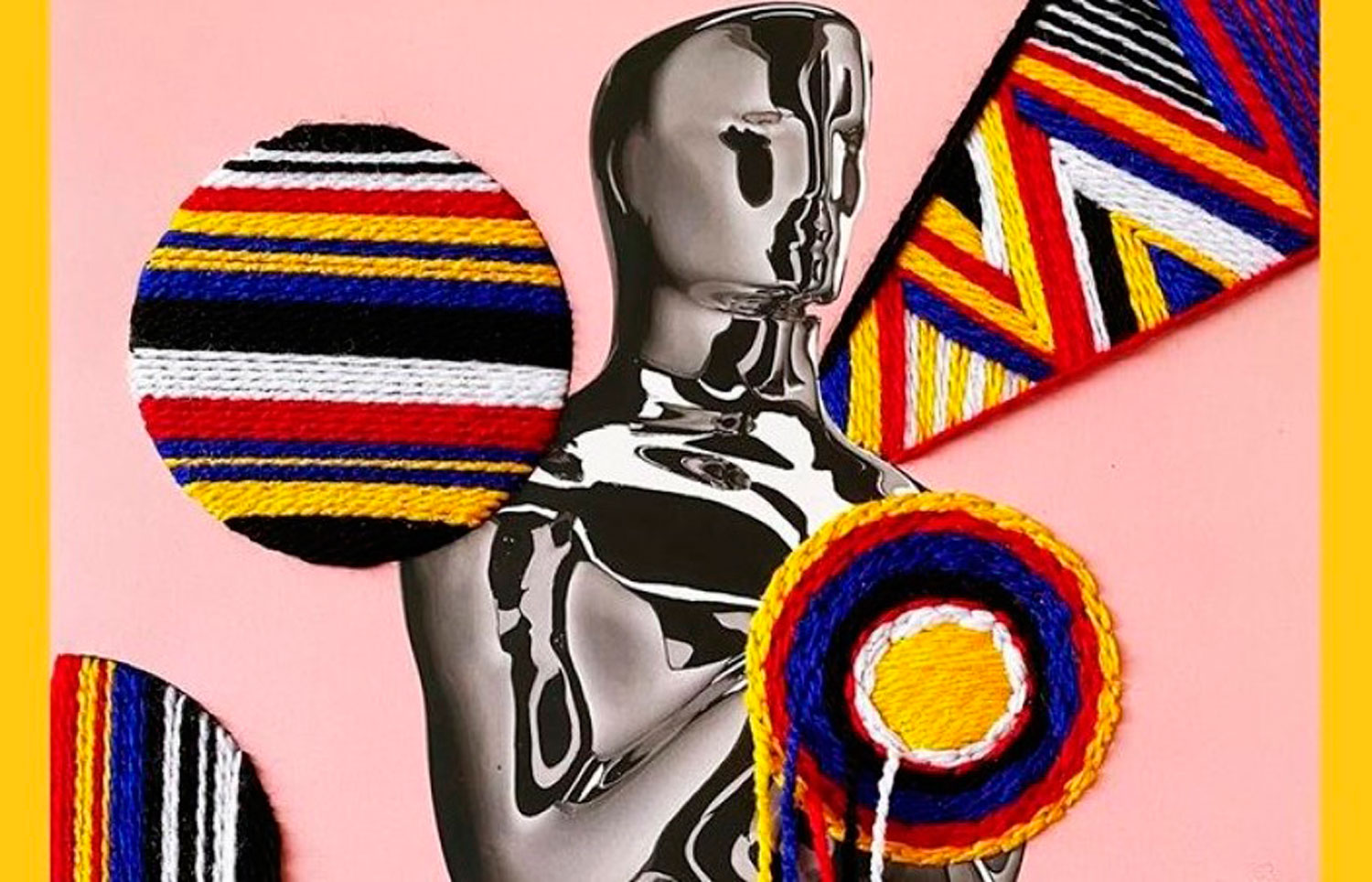
French impressionist Edgar Degas once said: "art is not what you see, but what you make others see." In the case of Mexican artist Victoria Villasana, her now renowned style of colorful interventions started off as an exploration, a spark that led her to try out the use of yarn as a form of expression.
She started creating patterns, geometric figures, bright colors. She began to embroider black and white newspaper pictures, famous portraits of influential and historic figures. She took her yarn to the streets and created murals across London, the city she called home for more than a decade. She didn't overthink, she just channeled it all, an exercise in letting lose something that laid dormant inside of her, something she couldn't quite put into words.
But then there was what she made others see.
What others saw was a symbiosis of cultures, a fusion of Mexican traditions and global pop culture icons that managed to revindicate indigenous traditions, speak out about injustices and be breathtakingly beautiful, all at once. Her work struck a chord with everyone from the casual art viewer to the specialized critic. It wasn't long before she was being sought after by brands like Nike, Netflix and the Academy Awards. She was even commissioned by Rihanna at some point.
She's been praised for "emphasizing historic textile processes and presenting a celebration of empowerment and cultural pride", celebrated for her "disruptive, thought-provoking work", admired for her "rebellious femininity and cross-cultural imagery."
"It's funny because sometimes it's other people that tell you what they see in your art", she explained to The Latin Times. "And then you say 'huh, that's actually true."
We recently sat down with Villasana to talk about her work, her influences and why she decided to relocate to Mexico.

Let's start with what you are doing at the moment. Where are you living, what are you up to?
I've been living between England and Mexico, but more so Mexico the last two years. I've really connected with my country since I've been back. As for work, I'm currently preparing a project with Nike because they're about to open the first Jordan store in Mexico City and they asked me for a piece. But the main thing right now is that I'm looking into collaborating with local artisans.
Have you worked with artisans in the past?
Well, people always kind of assume I've done it in the past because my job seems so inspired by that. But the truth is that I never went to any kind of course on traditional weaving or embroidery. It was a very organic, spontaneous process. I haven't really gotten too much into the worldview of the artisans that have done this for centuries. It's been kind of my own thing until now.
So where do you think your interest in this form of traditional embroidery came from?
I don't know. There was nothing intellectual behind it. It was something I had inside and just happened. I recently went to Chiapas, which is a region with a lot of indigenous population in Mexico, and I saw all the incredible patterns their artisans make and I thought to myself 'of course, I see some of that in my own work.' But they do it with this attention to detail, through traditional techniques that are passed down from generation to generation. Mine are like my very own versions, you know? Maybe they come from my ancestors, sure, but it's something very unconscious. In hindsight I see a lot of Mexico in them, the markets I visited when I was young, for example. There's something that accompanies all of use without even realizing it.

So why exactly are you approaching local artisans at this stage in your career?
I feel I'm exploring my culture at the moment. I want to investigate it, embrace it and honor it. My roots are very important. I went to England and spent 15 years before I truly understood the immigrant narrative: your roots will always be your roots and you learn to value that. You learn that all that history is part of you.
There's also another reason for working with artisans that has to do with how things are being created at the moment. Artificial intelligence, for example, is reproducing everything in a way and there's this idea that a machine can do anything. But to me that doesn't translate into art. I believe that the work of a craftsman, done by hand, must be valued. The new generations need to witness these processes, which I find truly magical.

I can definitely see that in your work. For example, there's this very human idea of things being left incomplete, yarn that's still waiting to be woven in a way.
Yes, I've always loved that idea of the threads left hanging, as if the piece is unfinished. Honestly, at first I did it because I've always been fond of surrealism and there's this recurring theme around things spilling out. Later on I appreciated the metaphor of what we are— not finished products, but works in progress. And that's really the symbolism in my pieces. I leave them like that so that they can evolve, remain open to improvement and embrace change.
Ok, so let's shift gears a bit and talk about the issues you choose to talk about in your work. There are several recurring themes in your work that touch upon social injustices, giving voice to those that don't usually have one.
Well, I feel that the themes and the technique go hand in hand. When I started doing this in England, the country was in the middle of the refugee crisis, Syrian refugees were starting to arrive. And I remember only hearing about them through stats and number. So I started taking black and white images from newspapers and intervening them with the woven patterns in an attempt to add humanity to their stories. Humanizing them through color. I think unconsciously that's what I do.
And what about the portraits you create around iconic personalities like Nelson Mandela, Frida Kahlo, David Bowie and Nina Simone. Do you feel there's a common thread in the characters you choose to portray.
Well, I believe that what I do reflects a lot of what I've been in the many stages of my life. I mean, as a teenager, I was a revolutionary who wanted to change the world. So I've always been interested in social causes and have always been drawn to people who, in different fields, have broken rules in search of a better world. I've always looked up to those kinds of people. So those are the types of people I choose to portray.
That idea of my work reflecting my life experiences is very important to me. The way I look at it England is my ying and Mexico is my yang, I connect to England on a cerebral level and to Mexico with my heart. In England I spent some dark moments that helped me grow as a person. So in a way England is the photographic side of my work. Mexico is the color. I'm the fusion of both.

© 2024 Latin Times. All rights reserved. Do not reproduce without permission.







